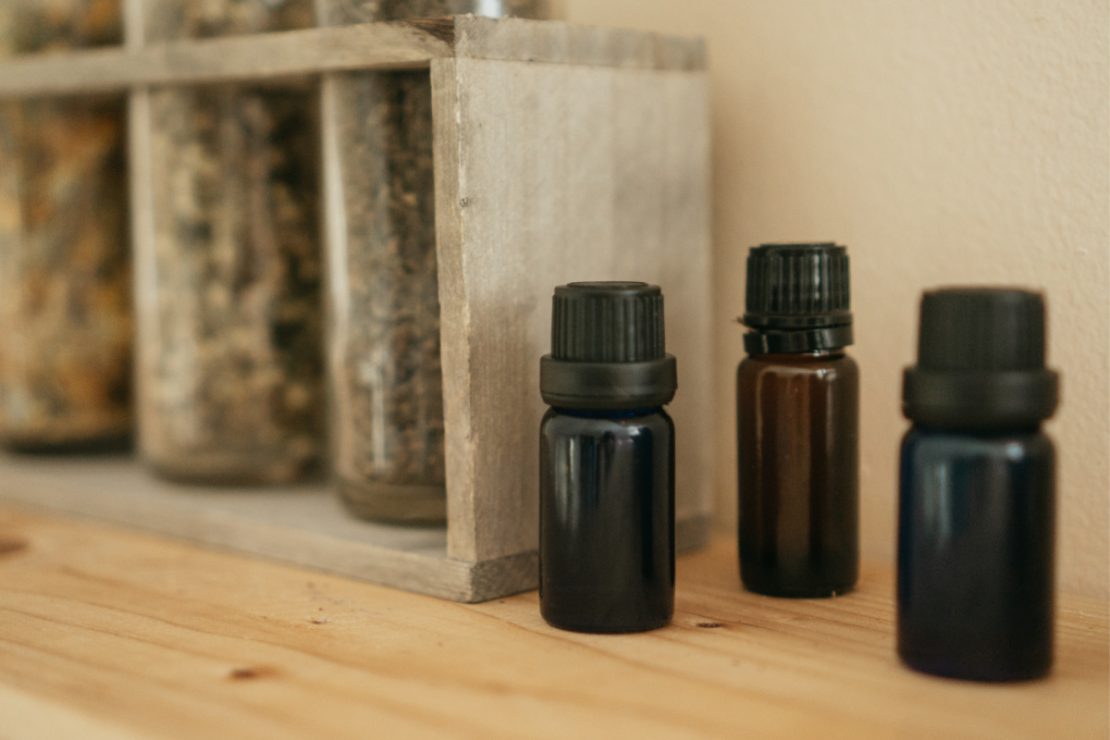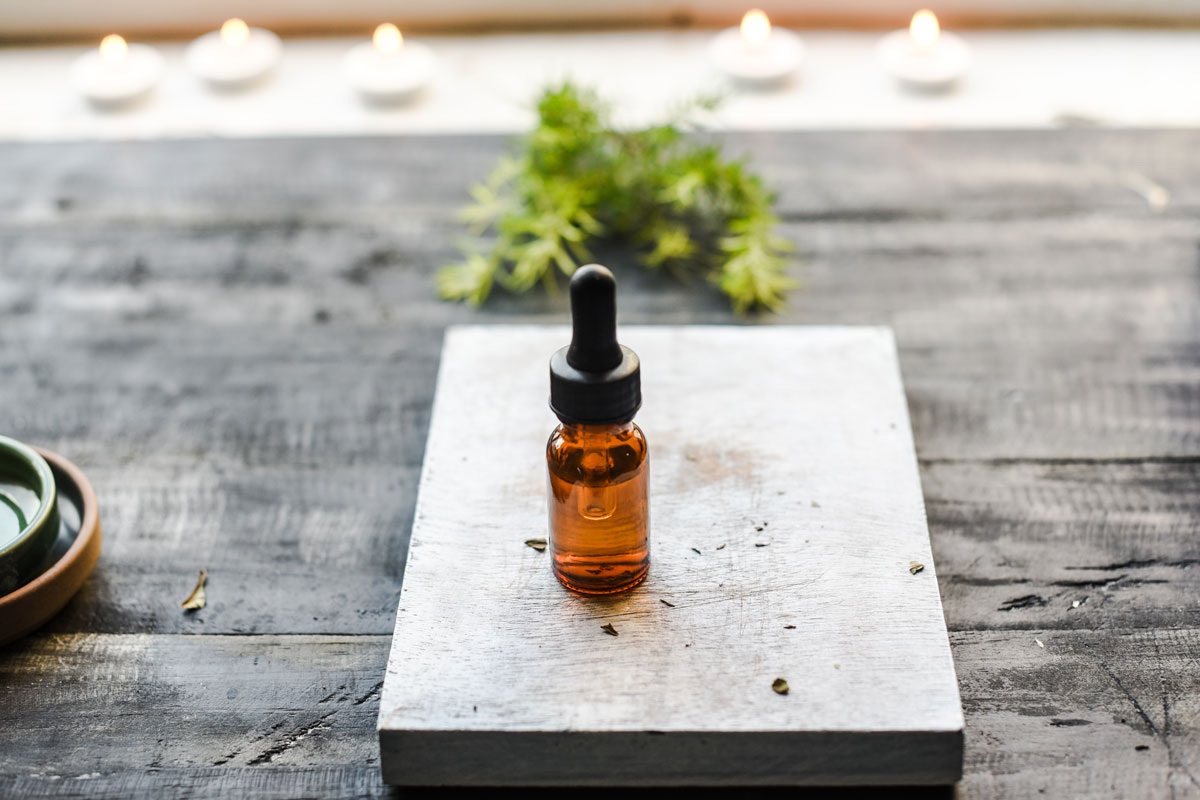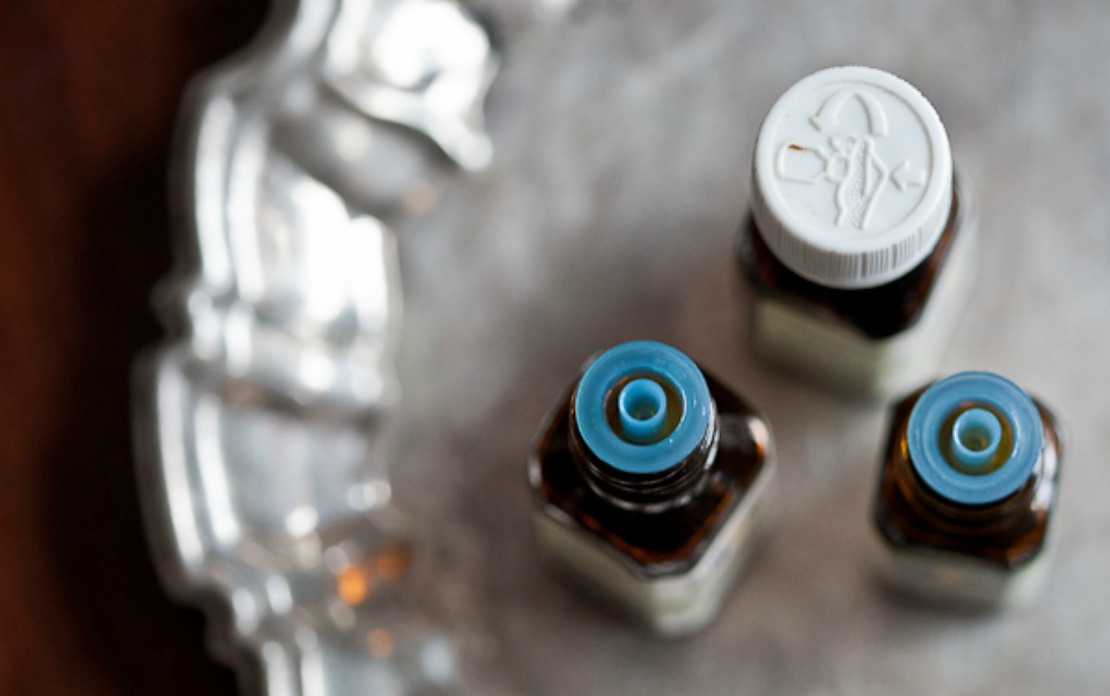
Getting Ticked Off: An Essential Oil Blend to Repel Ticks
Ticks are arachnids from the order Ixodida, divided into three families, the Ixodidae (hard ticks), the Argasidae (soft ticks), and Nuttalliellidae, which contains only one species living in southern Africa (Wikipedia, 2022). These parasitic relatives of mites are vectors for numerous human diseases, the most widely recognized being Lyme disease and Rocky Mountain spotted fever (Centers for Disease Control, 2022). Tick-borne disease cases are also on the rise, so diligence to repel ticks is increasingly necessary (Chrobak, 2022).
Tick-borne diseases can be challenging to diagnose and are sometimes deadly; hence, avoiding tick bites is the best way to prevent contracting these diseases. There are both physical and chemical means of preventing tick bites when trekking through tick country, and a combination of the two is often the best approach.
The best physical precaution to repel ticks is to wear light-colored, tight clothing that covers exposed skin. Long-sleeved shirts and long pants protect your skin, while light colors make it easier to see hitchhiking ticks crawling around, looking for a place to settle down for a meal.
You should apply chemical repellents directly to the skin as well as clothing since repellents on clothing alone may encourage the ticks to move under the clothing onto your skin. The same goes for dogs—only applying a repellent blend to the dog’s collar may encourage the tick to find another, more suitable attachment site somewhere else on the dog’s body. Lightly spraying the dog’s legs, belly, and back with a dog-safe repellent may be more effective. If ingestion is a concern, spray in areas the dog cannot reach as easily, such as the back of the neck, the base of the tail, and the chest between the front legs.
The two most effective tick repellents are DEET and permethrin, both of which have questionable safety profiles. Nonetheless, if you are in tick country and will only be applying the repellent occasionally, even these choices may be better than the risk of contracting a tick-borne disease. DEET-based repellents also last 2-3 times as long as natural repellents.

Botanical Options for Tick Repellent
There are also more natural alternatives available, with varying degrees of efficacy against different tick species, different life stages, and for various lengths of time. Although there is some overlap between natural tick and mosquito repellents, most mosquito repellents will not also repel ticks. Essential oils of Alaska cypress (Cupressus nootkatensis), Virginia cedarwood (Juniperus virginiana) (Flor-Weiler et al., 2022), Chinese weeping cypress (Cupressus funebris), juniper leaf oil (Juniperus communis), balsam torchwood (Amyris balsamifera), and lemon eucalyptus (Corymbia citriodora) (Gardulf, 2004) have demonstrated their effectiveness against ticks, primarily through in vitro studies. Some of these plant extracts repel nymphs, and some repel larvae, so a blend of extracts can be more effective than one alone (Carroll et al., 2010; Carroll et al., 2011; Haritan, n.d.).
A few studies have looked at several other essential oils with varying degrees of success, but scientists have only recently started to investigate them. Goode et al. (2018) looked at turmeric (Curcuma longa) essential oil on a dog, and Soutar et al. (2019) used 5% thyme (Thymus vulgaris) and 5% spearmint (Mentha spicata) sprays on pants and a blanket. These studies found the essential oils to be effective repellents, but the studies were elementary, and further field trials are required before anything is known with any degree of certainty.
Additionally, the individual chemical constituents elemol, isolongifolenone (Zhang et al., 2009), p-menthane-3,8-diol (found in lemon eucalyptus), and geraniol have demonstrated tick-repellent qualities (Carroll et al., 2010; Haritan, n.d.). P-menthane-3,8-diol is found in lemon eucalyptus, but solongifolenone and elemol are not prevalent in common, commercial essential oils, but Damask rose (Rosa damascena), palmarosa (Cymbopogon martinii), citronella (Cymbopogon winterianus), and geranium (Pelargonium x asperum, P. x graveolens., P. roseum) essential oils all have significant percentages of geraniol. This constituent shows up in lesser amounts in other essential oils as well.

Although we often see rose, palmarosa, citronella, geranium, and Virginia cedarwood essential oils for sale, we do not encounter Alaskan cypress (also known as Nootka cypress or Nootka tree), lemon eucalyptus, or amyris as frequently.
Cupressus nootkatensis contains constituents that have demonstrated both acaricidal (Panella et al., 1997) and tick-repellent (Dietrich et al., 2006; Jordan et al., 2012) activities. Although these constituents are in very low concentrations, fortunately, low concentrations appear to be effective. One of these vital constituents is nootkatone, which you also find in grapefruit peels and grapefruit essential oil. Unfortunately, it is present in such low amounts in retail grapefruit (Citrus paradisi) essential oil as not to be very effective to repel ticks. Still, you might consider adding some grapefruit essential oil to your blend to lighten the aroma.
Lemon eucalyptus (Corymbia citriodora) is a member of the Myrtaceae family. Although its native habitat is Queensland, Australia, it is cultivated commercially in Brazil, China, India, Kenya, and South Africa. Its primary constituent is citronellal, an aldehyde demonstrating potent antifungal and insect-repellent activity (Battaglia, 2018). C. citriodora has demonstrated acaricidal (Panella et al., 1997) and tick-repellent activity in in vivo and clinical studies (Gardulf et al., 2004).
Amyris (Amyris balsamifera L.), also known as West Indian sandalwood, poor man’s sandalwood, or torchwood, is a tree that grows in South and Central America. Despite its nicknames, amyris is not related to the Santalum genus, and its essential oil chemistry differs as well. It is sometimes called “poor man’s sandalwood” as its aroma is reminiscent of the rich, complex sandalwood, but it is weaker and simpler. Perfumers may use it as a fixative, and its aromatherapeutic actions are antiseptic and sedative (Battaglia, 2018). Amyris is rarely used in aromatherapy, although one of its primary constituents, valerianol, demonstrates skeletal muscle calming qualities (Kucharska et al., 2021). However, scientists have studied both the essential oil and elemol, one of its constituents, for their tick-repellent potential.
In vitro studies show that amyris essential oil and its constituent elemol can repel brown dog ticks (Rhipicephalus sanguineus) (Paluch et al., 2009), lone star ticks (Amblyomma Americanum), and deer or black-legged ticks (Ixodes scapularis) (Carroll et al., 2010) in some cases almost as well as DEET.

Base Oil Options
For a carrier base, neem (Azadirachta indica), black cumin seed (Nigella sativa), virgin coconut (Cocos nucifera), babassu (Attalea speciosa), and palm kernel (Elaeis guineensis) oils may be good ingredient choices to repel ticks. Ecological and economic controversies surround palm kernel oil cultivation, so purchase it only from a reliable source.
Neem has insecticide, acaricide, and insect-repellent properties (Mordue & Nisbet, 2000), and it has demonstrated tick-specific larvicidal and repellent qualities in several studies against various tick species (Al-Rajhy et al., 2003; Choudhury, 2009). Azadirachtin, the active insecticidal constituent in neem extracts, primarily disrupts arthropod development at several stages. Neem is very viscous, so it often comes pre-diluted in olive oil or other vegetable oil. It also has a strong, somewhat unpleasant smell, so it is best to use it as an enhancer ingredient in minimal amounts, not a core ingredient. Neem is also antibacterial, antifungal, anti-inflammatory, and emollient, so it is good for the skin (Shutes & Siegmund-Roach, 2022).
Black cumin seed, also known as black seed or Nigella, demonstrated tick repellency in one in vitro study (Carroll et al., 2016). Nigella may be skin sensitizing, so dilute it before applying topically. It also has anti-inflammatory, emollient, and antimicrobial actions to enhance your blend (Shutes & Siegmund-Roach, 2022).
A commercial lauric acid-based formulation (10% lauric acid) repelled the European castor bean tick (Ixodes ricinus) in an in vitro study (Schwantes et al., 2008). Virgin coconut oil (41.5-53.2%), babassu oil (40-55%), and palm kernel oil (45-55%) all contain significant fractions of lauric acid (Shutes & Siegmund-Roach, 2022).

Water-Based Sprays
Essential oils can also be blended into a water-based spray when using a dispersant, such as Solubol or at least 25% of 190-proof alcohol, in the blend. Water-based sprays will evaporate more quickly than oil-based blends but may be easier to use. They also only last a week or two before they need to be dumped out and remade to avoid bacterial and fungal growth. Aloe jelly (not aloe gel) and carrier oils make excellent bases for applying insect repellents to exposed skin.
Essential Oil Blend to Repel Ticks
Repellents work best when used on both clothing and skin. Several individual natural plant constituents are highly effective acaricides and repellents, and companies can extract and concentrate these constituents to create effective natural repellents. Including some of these tick-repellent oils in your homemade mosquito repellents may broaden the scope of their effectiveness, especially since oils that repel ticks also tend to have other insect repellent properties.
5 milliliter amber glass bottle with orifice reducer The shelf life is up to 2 years.
Tick Repellent Recipe
Making a stock blend of the essential oils allows you to change carrier bases for various application needs.
24 drops amyris (Amyris balsamifera L.) essential oil
15 drops Virginia cedarwood (Juniperus virginiana) or Alaskan cypress (Cupressus nootkatensis) essential oil
24 drops geranium (Pelargonium x aperum, P. x graveolens., P. roseum) essential oil
12 drops lemon eucalyptus essential oil
22 grams virgin coconut oil, melted (Cocos nucifera) Combining essential oil with base:
Use up to 5% dilution of essential oil for use on skin with an oily base or up to 2.5% dilution with an aqueous base. Use up to 2% dilution of essential oil for sensitive skin.
Carrier Oil Base for Skin Applications
Virgin coconut oil, neem oil, and black cumin seed oil are the key ingredients in this recipe. This blend could be made with other butters or oils to create various products, including creams, whipped butters, or lotions.
70 grams fractionated coconut oil (Cocos nucifera)
5 grams black cumin seed oil (Nigella sativa)
3 grams neem oil (Azadirachta indica)
In Closing,
Repelling ticks and preventing tick bites is increasingly vital as the prevalence of tick-borne diseases spreads. You can use quite a few tools, from simple full-coverage clothing, insecticide-impregnated clothing, or purchased insect repellents (natural or synthetic) to homemade insect repellents. Try out this tick-repellent essential oil blend to better enjoy your time outdoors and avoid getting ticked off!
For more on essential oils, see:
The Ultimate Essential Oils Guide
Essential Oil Myths & Facts Answered

Other resources:
- Amyris essential oil https://www.aromaweb.com/essential-oils/amyris-oil.asp
- EPA fact sheet for p-methane-3,8 diol https://www3.epa.gov/pesticides/chem_search/reg_actions/registration/fs_PC-011550_01-Apr-00.pdf
- General recommendations https://www.healthline.com/health/essential-oils-for-repelling-ticks
- Lyme disease https://www.cdc.gov/lyme/index.html
- Medical letter on insect repellents https://secure.medicalletter.org/w1628c
- Nootkatone information from the CDC https://www.cdc.gov/ncezid/dvbd/media/dpk-nootkatone.html
- Repellent recommendations for infants and pregnant parents https://www.infantrisk.com/content/insect-bites-and-repellant-sprays-pregnant-women
- Tick repellent recipe with carrier options https://tisserandinstitute.org/learn-more/tick-repellent-research-based/
- Ticks and tick-borne diseases:
https://web.uri.edu/tickencounter/
https://tisserandinstitute.org/tick-talk-2/
REFERENCES
Al-Rajhy, D., Alahmed, A.M., Hussein H.I., & Kheir, S.M. (2003). Acaricidal effects of cardiac glycosides, azadirachtin and neem oil against the camel tick, Hyalomma dromedarii (Acari: Ixodidae). Pest Management Science, 59(11), 1250-1254. https://doi.org/10.1002/ps.748
Battaglia, S. (2018). The complete guide to aromatherapy (Vol. 1) (3rd ed.). Black Pepper Creative.
Carroll, J.F., Paluch, G., Coats, J., & Kramer, M. (2010). Elemol and amyris oil repel ticks Ixodes scapularis and Amblyomma Americanum (Acari: Ixodidae) in laboratory bioassays. Experimental and Applied Acarology, 51(4), 383-392. https://doi.org/10.1007/s10493-009-9329-0
Carroll, J.F., Tabanca, N., Kramer, M., Elejalde, N.M., Wedge, D.E., Bernier, U.R., … Zhang, S. (2011). Essential oils of Cupressus funebris, Juniperus communis, and J. chinensis (Cupressaceae) as repellents against ticks (Acari: Ixodidae) and mosquitoes (Diptera: Culicidae) and as toxicants against mosquitoes. Journal of Vector Ecology, 36(2), 258-268. https://doi.org/10.1111/j.1948-7134.2011.00166.x
Carroll, J.F., Babish, J.G., Pacioretty, L.M., & Kramer, M. (2016). Repellency to ticks (Acari: Ixodidae) of extracts of Nigella sativa (Ranunculaceae) and the anti-inflammatory DogsBestFriend™. Experimental and Applied Acarology, 70(1), 89-97. https://doi.org/10.1007/s10493-016-0058-x
Centers for Disease Control and Prevention. (2022, February 23). Diseases transmitted by ticks. CDC. https://www.cdc.gov/ticks/about/?CDC_AAref_Val=https://www.cdc.gov/ticks/diseases/index.html
Choudhury, M.K. (2009). Toxicity of neem seed oil against the larvae of Boophilus decoloratus, a one-host tick in cattle. Indian Journal of Pharmaceutical Sciences, 71(5), 562-563. 10.4103/0250-474X.58191
Chrobak, U. (2022, February 9). Why Lyme and other tick-borne diseases are on the rise. PBS News Hour. https://www.pbs.org/newshour/science/why-lyme-and-other-tick-borne-diseases-are-on-the-rise
Gardulf, A., Wohlfart, I., & Gustafson, R. (2004). A prospective cross-over field trial shows protection of lemon eucalyptus extract against tick bites. Journal of Medical Entomology, 41(6), 1064-1067. https://doi.org/10.1603/0022-2585-41.6.1064
Haritan, A. (n.d.). 7 effective, natural, and safe tick repellents from the plant kingdom. Learn Your Land. https://learnyourland.com/7-effective-natural-and-safe-tick-repellents-from-the-plant-kingdom/
Dietrich, G., Dolan, M.C., Peralta-Cruz, J., Schmidt, J., Piesman, J., Eisen, R.J., & Karchesy, J.J. (2006). Repellent activity of fractionated compounds from Chamaecyparis nootkatensis essential oil against nymphal Ixodes scapularis (Acari: Ixodidae). Journal of Medical Entomology, 43(5), 957-961. https://doi.org/10.1093/jmedent/43.5.957
Flor-Weiler, L.B., Behle, R.W., Eller, F.J., Muturi, E.J., & Rooney, A.P. (2022). Repellency and toxicity of a CO2-derived cedarwood oil on hard tick species (Ixodidae). Experimental and Applied Acarology, 86, 299-312. https://doi.org/10.1007/s10493-022-00692-0
Goode, P., Ellse, L., & Wall, R. (2018). Preventing tick attachment to dogs using essential oils. Ticks and Tick-borne Diseases, 9(4), 921-926. https://doi.org/10.1016/j.ttbdis.2018.03.029
Jordan, R.A., Schulze, T.L., & Dolan, M.C. (2012). Efficacy of plant-derived and synthetic compounds on clothing as repellents against Ixodes scapularis and Amblyomma americanum (Acari: Ixodidae). Journal of Medical Entomology, 49(1), 101-106. http://dx.doi.org/10.1603/ME10241
Kucharska, M., Frydrych, B., Wesolowski, W., Szymanska, J.A., Kilanowicz, A. (2021). A comparison of the composition of selected commercial sandalwood oils with the international standard. Molecules, 26(8), 2249. https://doi.org/10.3390/molecules 26082249
Mordue (Luntz), A.J. & Nisbet, A.J. (2000). Azadirachtin from neem tree Azadirachta indica: Its action against insects. Anais da Sociedade Entomológica do Brasil, 29(4), 615-632. https://doi.org/10.1590/S0301-80592000000400001
Pace, S. (n.d.). Tick talk. Tisserand Institute. https://tisserandinstitute.org/tick-talk-2/
Paluch, G., Zhu, J., Bartholomay, L, & Coats, J. (2009). Amyris and Siam-wood essential oils: Insect activity of sesquiterpenes. In C.J. Peterson, & D.M. Stout (Eds.). Pesticides in household, structural and residential pest management (pp. 5-18). American Chemical Society. https://doi.org/10.1021/bk-2009-1015.ch002
Panella, N.A., Karchesy, J., Maupin, G.O., Malan, J.C.S., & Piesman, J. (1997). Susceptibility of immature Ixodes scapularis (Acari: Ixodidae) to plant-derived acaricides. Journal of Medical Entomology, 34(3), 340-345.DOI: 10.1093/jmedent/34.3.340
Schwantes, U., Dautel, H., & Jung, G. (2008). Prevention of infectious tick-borne diseases in humans: Comparative studies of the repellency of different dodecanoic acid-formulations against Ixodes ricinus ticks (Acari: Ixodidae). Parasites & Vectors, 1(1), 1-8. https://doi.org/10.1186/1756-3305-1-8
Shutes, J., & Siegmund-Roach, S. (2022). The carrier oil palette: Fixed oils, butters, herbal oils, and CO2 extracts of the carrier oil palette. Manuscript is submitted for publication. The School for Aromatic Studies.
Soutar, O., Cohen, F., & Wall, R. (2019). Essential oils as tick repellents on clothing. Experimental and Applied Acarology, 79(2), 209-219. https://doi.org/10.1007/s10493-019-00422-z
Tick (2022, March 10). Wikipedia. https://en.wikipedia.org/wiki/Tick
Zhang, A., Klun, J.A., Wang, S., Carrol, J.F., & Debboun, M. (2009). Isolongifolenone: A novel sesquiterpene repellent of ticks and mosquitoes. Journal of Medical Entomology, 46(1), 100-106. https://doi.org/10.1603/033.046.0113








